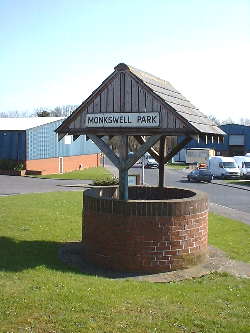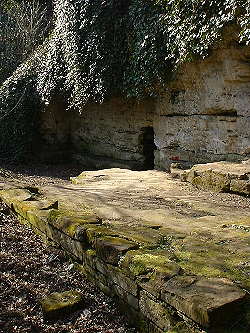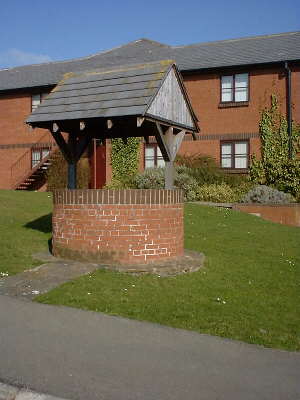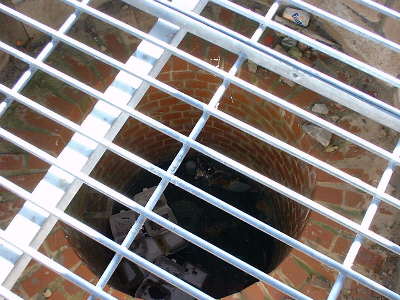|
 St
Robert's Well - Knaresborough St
Robert's Well - Knaresborough
(SE 3630 5647)
According to some local history books the location of St Roberts Well
has been lost, but Calvert's History of Knaresborough (1844) describes
St Robert's Well as being near the York Road, about 1 mile from the
town. Calvert also relates how prior to 1791 it had been an open well
about two feet deep but at that date bathing facilities were built at
the well, because of its value as a cold bath.
Checking the 1850's OS map revealed a place marked as "Cold
Bath" near the York Road, just as described by Calvert, and this
site was connected by a track to St Robert's cave and chapel 400m to the
south west. The 1980's OS map showed a stream still running across an
open field, but on a visit to the area in March 2000 it was rather a
shock to find the whole site had become a business park with an
interesting sign post at its entrance.
Checking the map showed the Monkswell business park was indeed right on
the site of St Robert's well/Cold Bath and so that seemed to be the end
of it, the spring having been swept away or buried under the
development. However i could not leave without a quick look at the sign
post 'well feature' and was very suprised to hear the sound of running
water from within it. A strong flow of clear water enters the well shaft
through a pipe at about six feet below ground level, and as this well
serves no practical purpose so it appears to have been built to preserve
the site of the spring which fed St Robert's Well and the Cold Bath.
Apart from the litter that has been dropped into the well there were
quite a number of coins below the metal grid which covers the well
shaft, so this holy well lives on in a strange continuity from the
medieval St Robert's well to the 18th century Cold Bath and into the era
of modern business ..........another of St Robert's miracles perhaps?
There is also a St Robert's Well at Levisham
between Pickering and Whitby, which may be linked with the activities of
this saint.
|
|
 St
Robert of Knaresborough St
Robert of Knaresborough
Robert Floure was originally a monk at
Whitby during the 12th century, but seeking a life of solitude and being
inspired by god, he visited a hermit who lived by the river at
Knaresborough. Soon after this the hermit returned to his secular life
and Robert took the hermits place, living in a small cave cut into rocky
bank of the river Nidd, the cave entrance having a simple chapel (of st
Gyles?) built around it.
(See picture on right)
Although living as a recluse, his piety soon
attracted followers and gifts from local benefactors which included land
alongside the river. Tradition relate that he performed healing miracles
and tamed wild animals, using forest deer to pull his plough.
Before his death St Robert established an order of Trinitarian Friars at
Knasborough, but he warned them that when his time came the monks of
Fountains abbey would try to carry his body away to their own
establishment, he urged his followers to resist them, which they did and
so St Robert was buried in his chapel cut from the steep rocky crags by
the river, where it was said that a medicinal oil flowed from his tomb
and pilgrims came from near and far to be healed by this.
It tempting to see some sort of tradition of strange/holy people living
in caves by the river at Knaresborough with the original hermit, then St
Robert and his cave/chapel (into which the river could flood) and later
Mother Shipton in her cave by the Dropping well.
|
 St
Robert's Well - Knaresborough
St
Robert's Well - Knaresborough St
Robert of Knaresborough
St
Robert of Knaresborough
